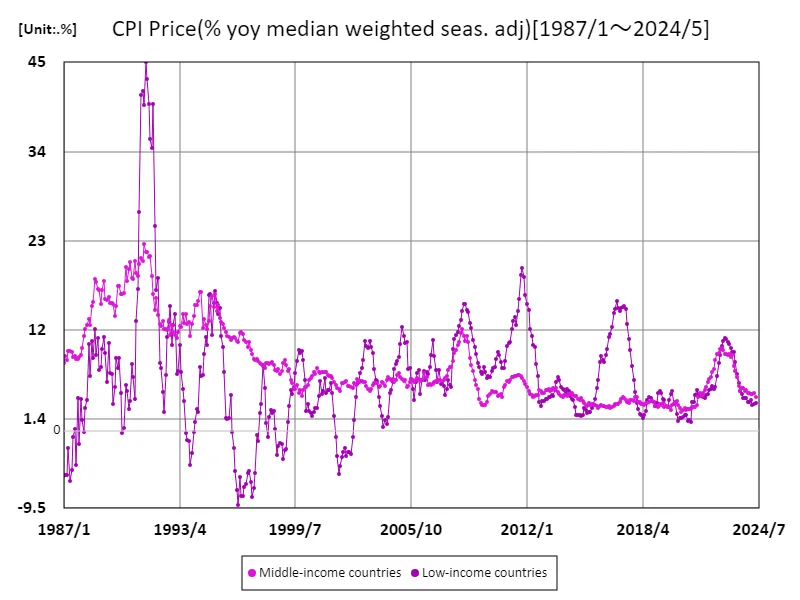Abstract
In recent years, the Consumer Price Index (CPI) for low-middle-income countries has consistently shown higher inflation rates compared to high-income nations. In May 2024, the CPI for these countries rose by 5.68%, marking a notable increase. This trend reflects persistent challenges such as rising energy prices, supply chain disruptions, and currency fluctuations. Historically, lower-income nations are more vulnerable to external shocks, which can lead to higher inflation. This inflation often disproportionately affects households with lower purchasing power, exacerbating inequality.
Consumer Price Index price (% change from previous year (weighted median, seasonally adjusted))
Since 1987, the Consumer Price Index (CPI) in emerging markets of Europe and Central Asia has seen extreme fluctuations, with a peak of 662% in February 1990, driven by hyperinflation during economic transitions. The region’s CPI has since stabilized, though it remains significantly below that historic high, currently 548% lower. These countries have experienced periods of high inflation, particularly in the early 1990s during post-Soviet economic reforms. Recent trends show more moderate inflation, reflecting improved economic management and integration into global markets, though risks remain from geopolitical tensions and external shocks.


The maximum is 662%[1990年2月] of EMDE Europe and Central Asia, and the current value is about 548m%
Consumer Price Index prices (% change from previous year (weighted median, seasonally adjusted)) (by income)
Since 1987, low-income countries have experienced significant inflationary volatility, with a peak CPI of 45% in June 1991, driven by economic instability and external shocks. The current CPI is 7.45% below this peak, reflecting a period of relative stabilization. However, inflation in low-income countries remains higher than in wealthier nations due to factors like weaker currencies, food and energy price volatility, and limited fiscal capacity. Over time, inflation has become more controlled but remains a challenge, especially in the face of global economic disruptions and local supply chain issues.


The maximum is 45%[1991年6月] of Low-income countries, and the current value is about 7.45%



Comments